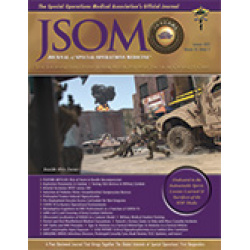Crimean-Congo Hemorrhagic Fever: A Refresher and Update for the SOF Provider
Klucher J, Gonzalez A, Shishido AA 99(5). 94 - 97 (Journal Article)
Crimean-Congo Hemorrhagic Fever (CCHF) is the most widespread tickborne virus causing human disease. CCHF wields a mortality rate up to 30% and was responsible for the death of a US Soldier in 2009. The virus is spread by the Hyalomma species of hard tick found across Central Europe, the Middle East, Africa, and Asia south of the 50° parallel. Infection typically consists of a 1-7-day non-specific viral prodrome, followed by onset of hemorrhagic disease on days 7-10. Severe disease may cause thrombocytopenia, transaminitis, petechial hemorrhage, hematemesis, and death typically by day 10 of illness. Education and insect control are paramount to disease prevention. Treatment is predominantly supportive care, though evidence suggests a benefit of early ribavirin administration. CCHF has caused multiple nosocomial outbreaks, and therefore consideration should be given to safe transport and evacuation of infected and exposed patients. Given the wide area of distribution, transmissibility, innocuous arthropod vectors, and high mortality rate, it is imperative that Special Operations Forces (SOF) providers be aware of CCHF and the existing countermeasures.


 Español
Español 



